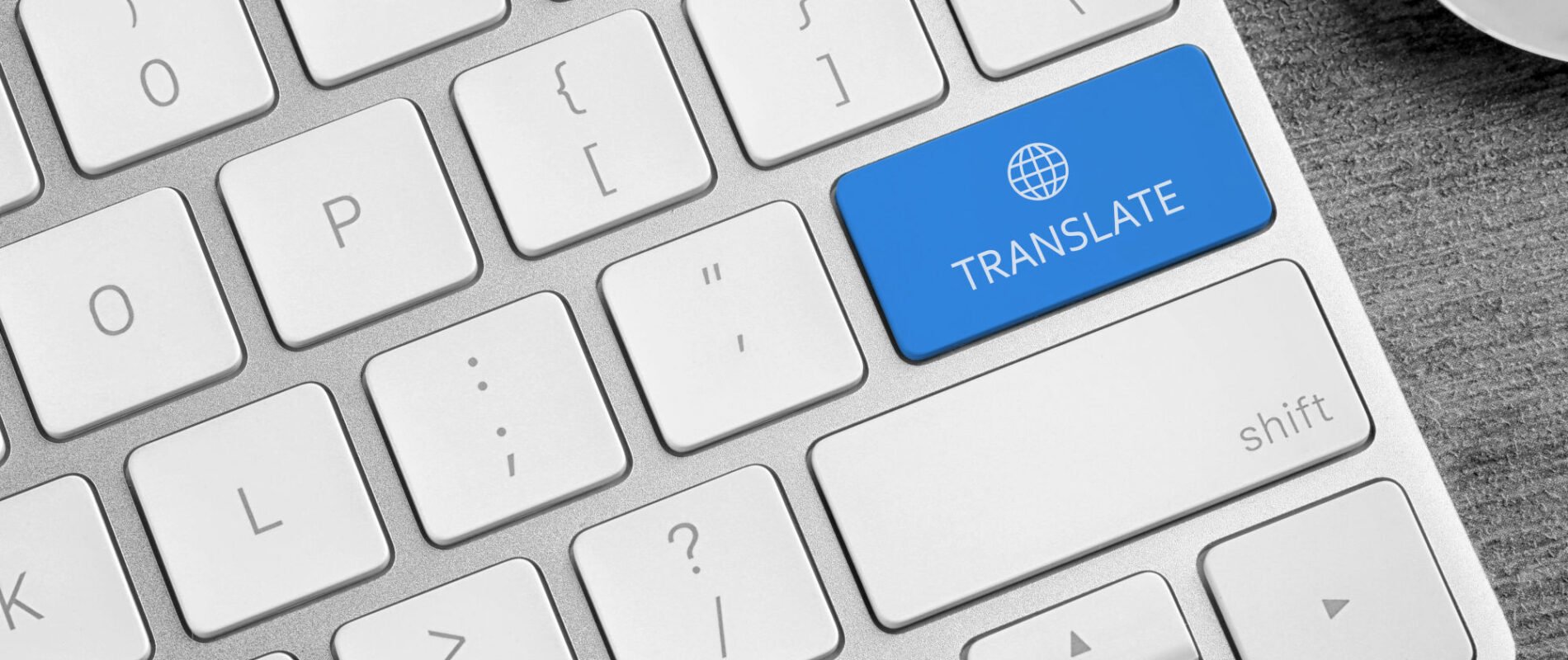In our increasingly interconnected world, the ability to communicate across languages is more vital than ever for businesses, education, and personal interactions. Traditionally, translation relied on human translators, a process that, while precise, was often time-consuming and costly. The emergence of artificial intelligence (AI) and neural machine translation (NMT) has transformed document translation services, delivering unprecedented efficiency, cost savings, and, in many cases, impressive accuracy. Tools like DeepL and Google Translate have become synonymous with instant translation, offering businesses rapid, affordable solutions. However, AI translation is not flawless, particularly in high-stakes fields like law and medicine, where human post-editing (MTPE) remains essential. This article explores how AI is revolutionizing translation services by enhancing efficiency, reducing costs, and improving accuracy, while highlighting its applications across industries and future prospects.
The Rise of Neural Machine Translation
At the core of this transformation is neural machine translation (NMT), a technology that uses deep learning algorithms to produce translations that are not only faster but often more natural and contextually accurate than those from older statistical machine translation (SMT) methods. Unlike SMT, which relied on phrase-based statistical models, NMT processes entire sentences, capturing nuances and context more effectively. Platforms like DeepL and Google Translate leverage NMT to provide near-instant translations, making them indispensable for businesses and individuals navigating multilingual environments. These tools can process thousands of words in seconds, a task that would take human translators hours or days.
Efficiency and Speed: A Game Changer
One of AI’s most significant contributions to translation is its remarkable speed. Human translators, constrained by time and cognitive limits, may require hours to translate a complex document, whereas AI can deliver results almost instantly. This efficiency is a boon for time-sensitive industries. For instance, e-commerce companies like Amazon and Alibaba use AI to translate product descriptions, customer reviews, and marketing materials into multiple languages, enabling rapid market entry. A single product listing can be translated into 20 languages in minutes, allowing businesses to seize global opportunities swiftly. Similarly, news organizations rely on AI to translate breaking stories, ensuring timely delivery to international audiences. This speed not only accelerates workflows but also gives companies a competitive edge in fast-paced markets.
Cost Reduction: Democratizing Translation
AI translation dramatically lowers costs, making high-quality translation accessible to a broader range of businesses. Human translation services typically charge per word, with average rates around $0.20 per word for common language pairs, and higher for specialized or rare languages. In contrast, AI translation tools often offer free basic services, with premium options like DeepL Pro or Google Cloud Translation API costing significantly less. For example, Google’s API charges approximately $20 per million characters, translating to a negligible cost per word. Even when factoring in MTPE, which may cost $0.05 to $0.15 per word, the total expense remains lower than full human translation. For small and medium-sized enterprises (SMEs) handling large volumes of content, such as product catalogs or customer support documents, these savings are transformative, enabling global expansion without breaking the bank.
Accuracy and Quality: Balancing AI and Human Expertise
NMT has vastly improved translation accuracy, producing results that often rival human translations for general content. By analyzing entire sentences rather than isolated phrases, NMT captures context and tone more effectively, resulting in fluent, readable translations. However, AI still struggles with idiomatic expressions, cultural nuances, and specialized terminology. In high-stakes fields like law and medicine, where precision is non-negotiable, these limitations can lead to serious errors. For example, a mistranslation in a legal contract could alter its intent, sparking disputes, while an error in medical instructions, such as misinterpreting “allergic to penicillin” as “penicillin is beneficial,” could endanger lives.
To address these challenges, the industry employs Machine Translation Post-Editing (MTPE), where human translators review and refine AI-generated translations. MTPE combines AI’s speed with human expertise, ensuring accuracy and cultural appropriateness. In legal translation, MTPE is critical to verify terms like “liability” or “jurisdiction” are correctly rendered. In healthcare, it safeguards patient safety by ensuring precise translations of dosage instructions or diagnostic reports. This hybrid approach delivers high-quality translations at a fraction of the cost and time of traditional methods, making it a cornerstone of modern translation workflows.
Industry Applications: Breaking Language Barriers
AI translation is reshaping multiple sectors by enabling seamless cross-language communication. In e-commerce, platforms like eBay and Etsy use AI to translate product listings, allowing sellers to reach international buyers effortlessly. For instance, eBay’s AI-driven translation system supports over 20 languages, boosting global sales by making products accessible to diverse markets. Tools like Smartcat integrate with e-commerce systems to automate translation workflows, further streamlining operations.
In the legal sector, law firms and corporate legal teams use AI for initial translations of contracts, patents, and regulatory documents, followed by expert review. This approach accelerates document preparation for cross-border transactions or litigation, saving time while maintaining compliance. For example, a multinational corporation might use DeepL to translate a patent application into multiple languages, with legal translators ensuring regulatory adherence.
Healthcare benefits from AI translation in areas like patient records, research papers, and pharmaceutical documentation. AI tools facilitate collaboration among global medical professionals by translating complex texts quickly. However, rigorous human review is standard to prevent errors that could impact patient care. For instance, a hospital might use AI to translate a patient’s medical history for an international specialist, with a translator verifying critical details.
The IT and automotive industries also leverage AI for localization. Software companies translate user interfaces and help documentation to support global users, while automakers translate technical manuals for international technicians. These applications highlight AI’s versatility in meeting diverse translation needs.
Market Growth and Future Trends
The machine translation market is expanding rapidly, driven by AI advancements and growing demand for multilingual content. In 2020, the global market was valued at USD 812.6 million, with projections estimating a compound annual growth rate (CAGR) of 19.3% through 2028. This growth reflects widespread AI adoption across industries, with 85% of translation professionals incorporating machine translation into their workflows, according to industry reports. E-commerce, healthcare, and IT sectors are key drivers, fueled by the need for rapid, scalable translation solutions.
Looking forward, AI translation is poised for further innovation. Advances in natural language processing (NLP) and machine learning will enhance NMT’s accuracy, particularly for complex texts and less common languages. Real-time speech and video translation, powered by integrated NLP and speech recognition, will enable seamless communication in meetings or customer support. Additionally, AI models trained on more diverse datasets will better handle specialized terminology and cultural nuances, reducing reliance on post-editing. These developments promise to make translation services even more accessible and effective, reshaping global communication.
Conclusion
Artificial intelligence, through neural machine translation, is revolutionizing document translation by delivering faster, more affordable solutions that meet the demands of a globalized world. While human oversight remains crucial in fields like law and medicine, the synergy of AI and MTPE offers a powerful balance of speed, cost, and quality. From e-commerce to healthcare, industries are harnessing AI to connect with global audiences, driving efficiency and innovation. As the machine translation market continues to grow, AI’s role in breaking language barriers will only expand, fostering a more connected and inclusive world.
At Artlangs Translation, we blend cutting-edge AI technology with human expertise to deliver fast, accurate, and culturally sensitive translations. Whether you need document translation for business, legal, or medical purposes, our team ensures your message is conveyed perfectly across languages. Trust Artlangs to bridge your communication gaps with precision and care.











